Studio Hildebrand
Mag.Art. Christoph Hildebrand
+49 0163 5810594
ch@studio-hildebrand.net




Mag.Art. Christoph Hildebrand
+49 0163 5810594
ch@studio-hildebrand.net





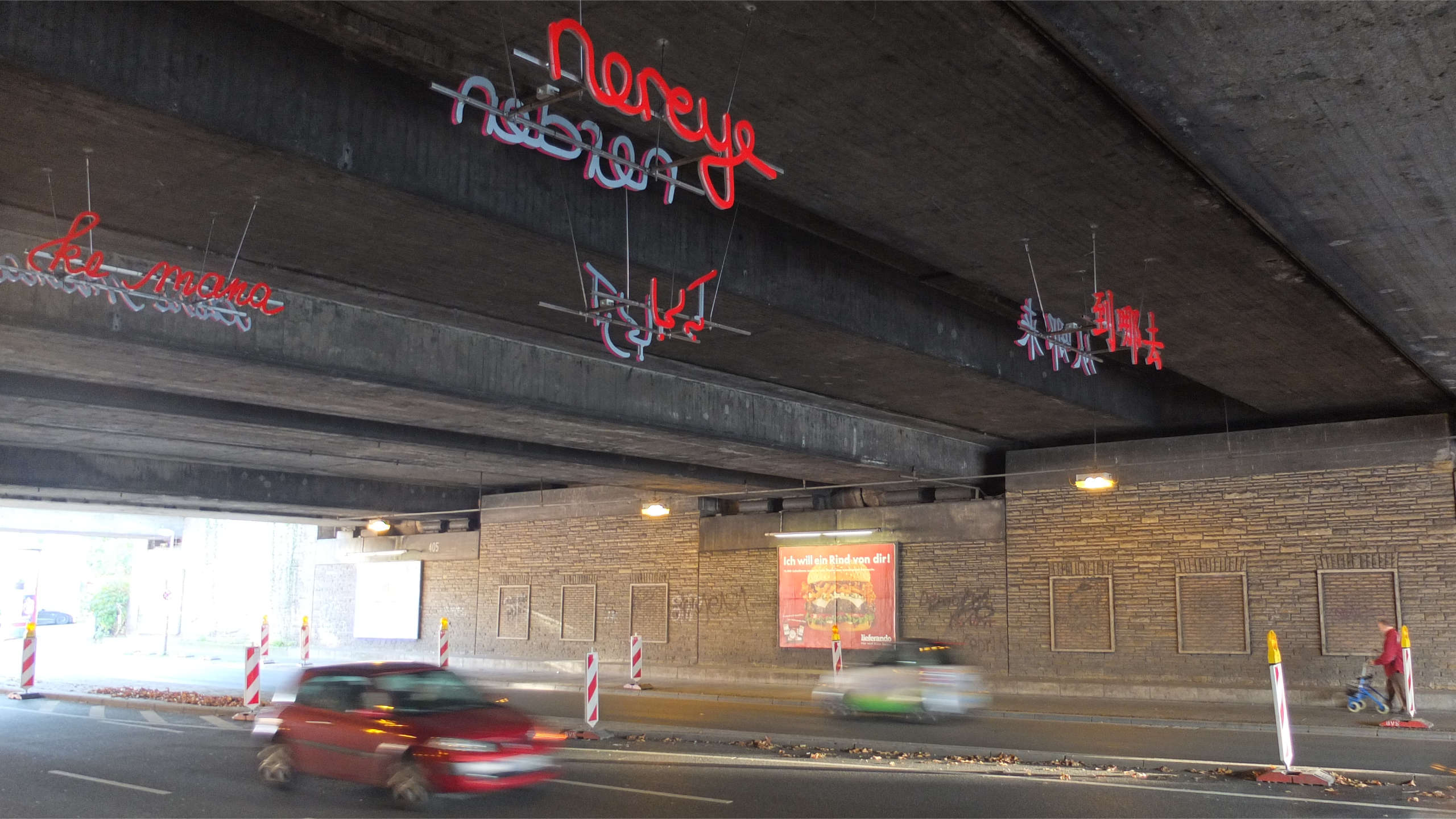

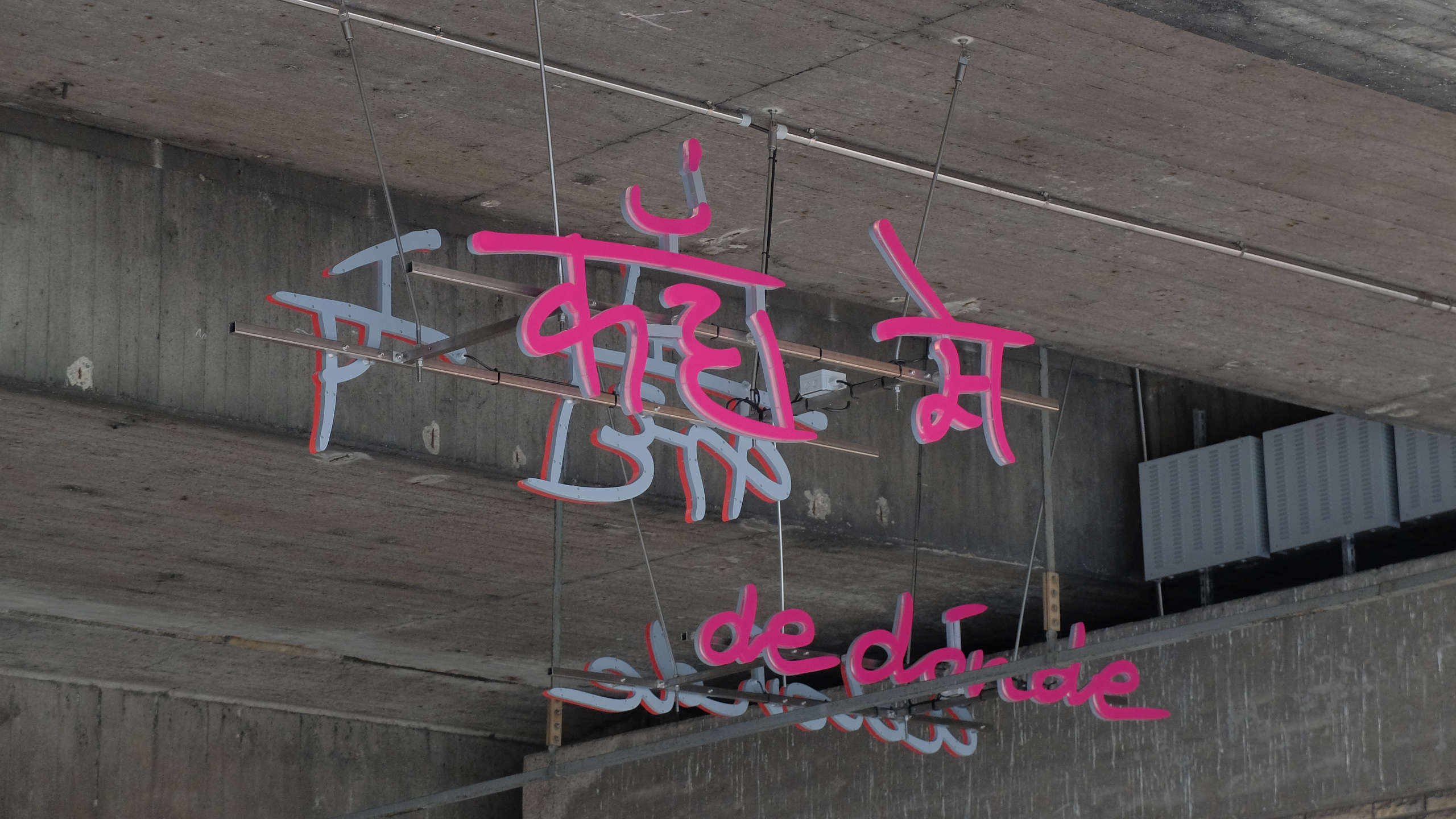



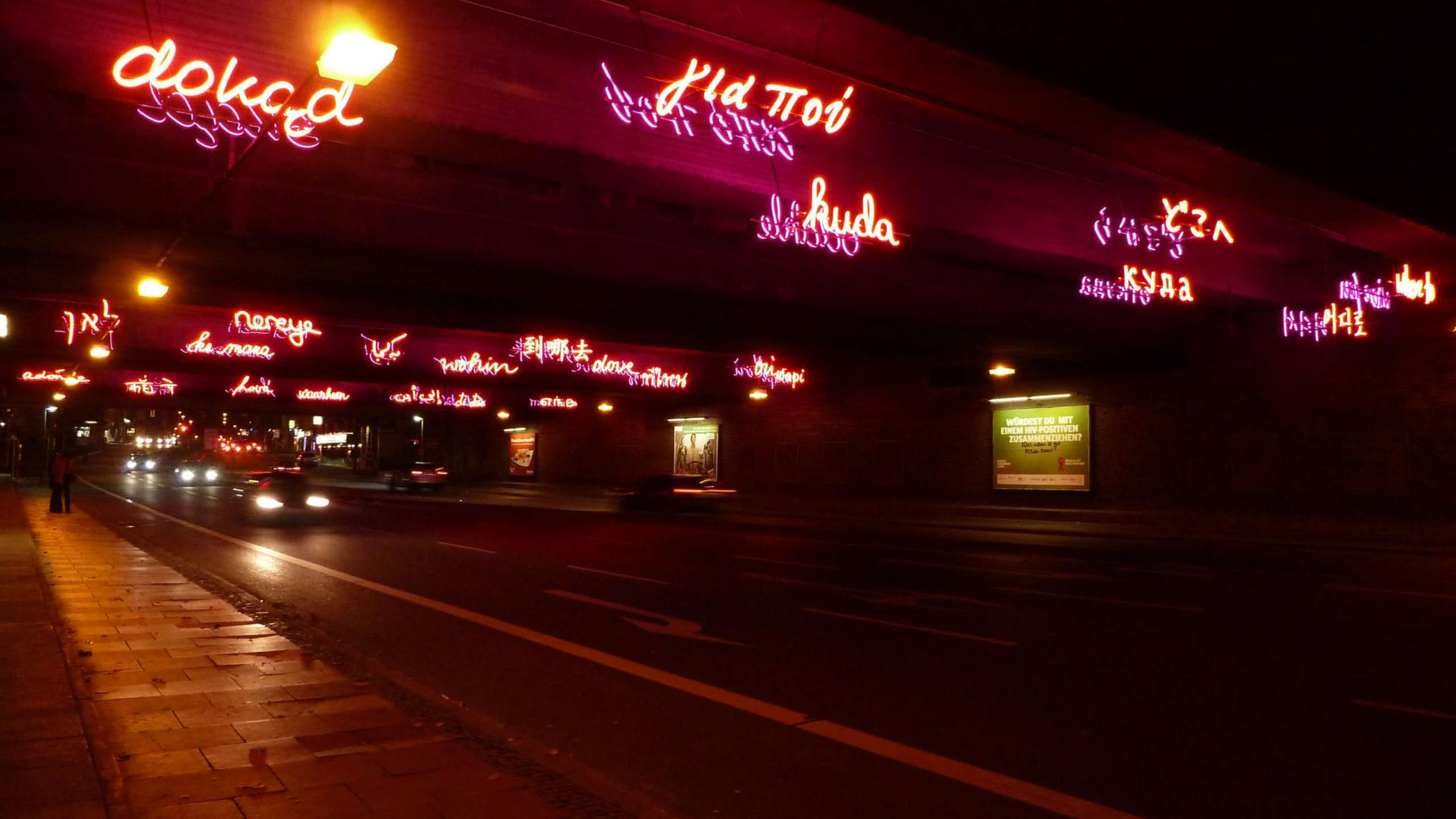
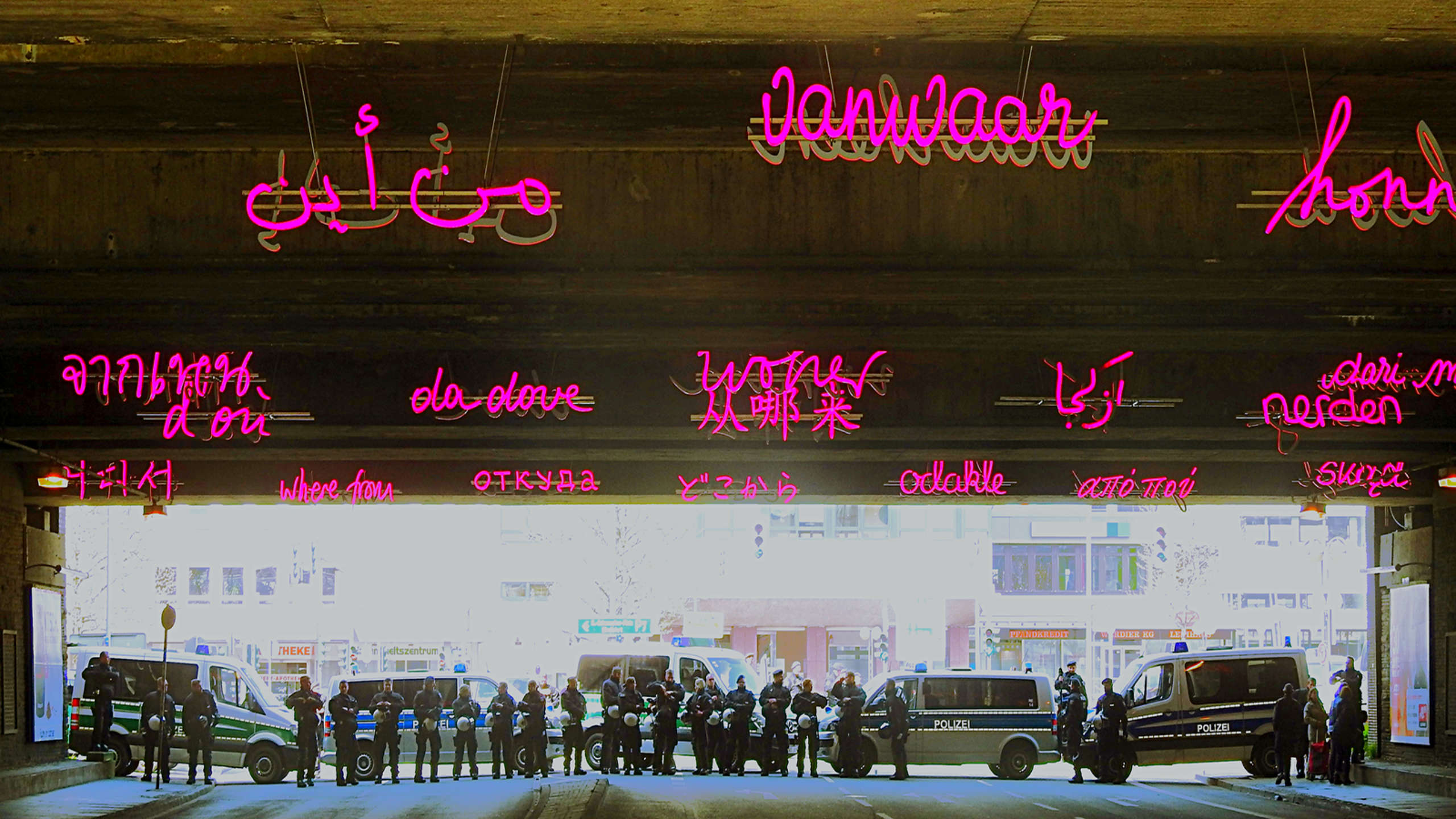
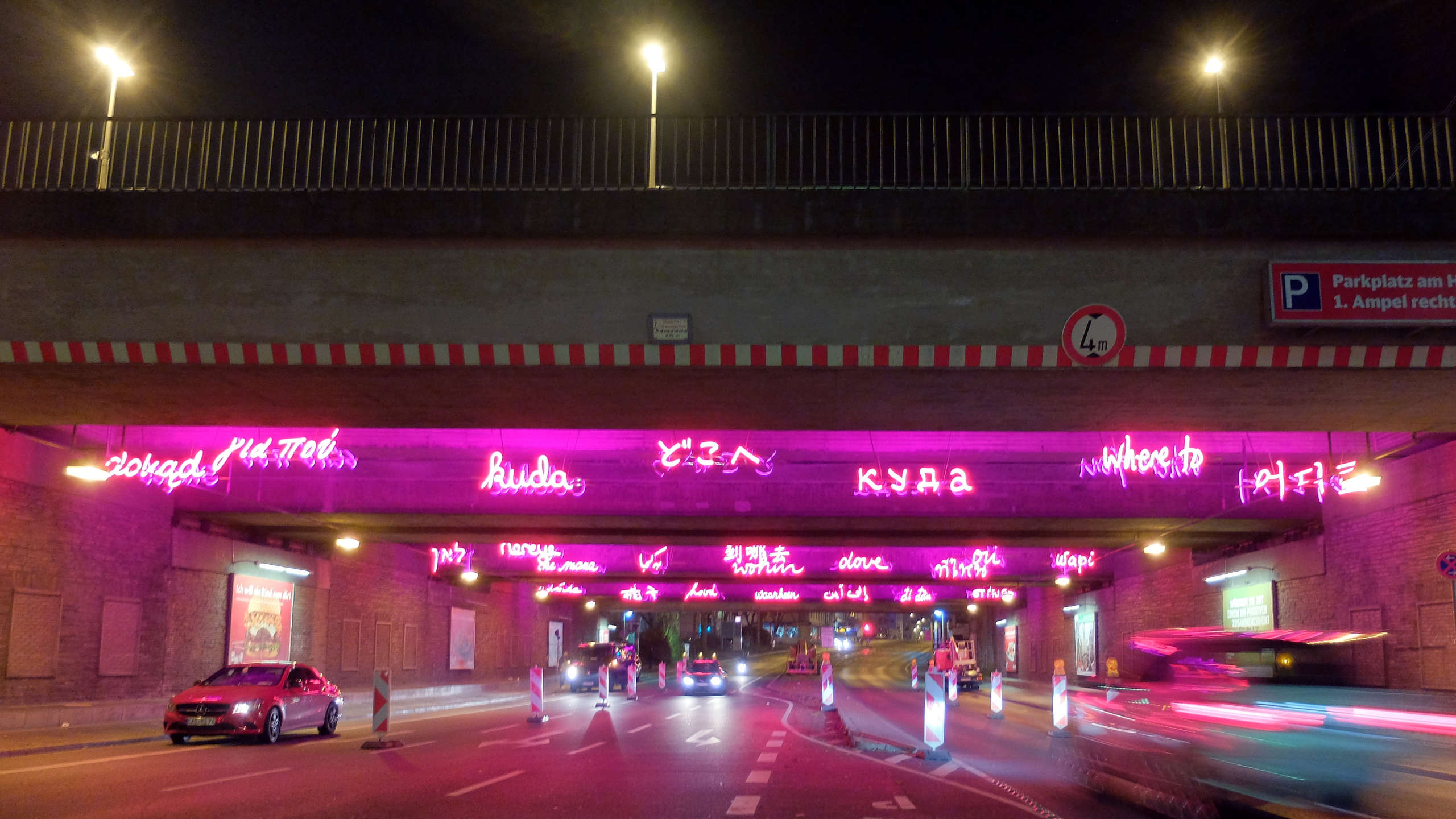
Ein Kunstwerk zum Thema Migration, multikulturelle Gesellschaft und Globalisierung.
Tor 15, das größte der zu gestaltenden Stadttore, befindet sich in nächster Nähe zum Hauptbahnhof Bochum und überbrückt die stark befahrene Ausfallsstraße zum Universitätsviertel. An diesem Ort ist das Thema des Ankommens und Wegfahrens besonders präsent. Der Bahnhof verbindet Bochum mit der ganzen Welt, in der Ruhr-Universität studieren Menschen aus allen Kulturkreisen.
Am Bahnhof kommen mit Zug und Bus die vielen Menschen aus anderen Ländern an, die in Bochum eine Zukunft suchen. Laut Auskunft des statistischen Jahrbuchs von Bochum leben hier Menschen aus über 62 Nationen aller 5 Kontinenten, die 8,6 Prozent der Bevölkerung oder 33.819 von 393.853 Einwohnern bilden. Sie sprechen in über 45 Sprachen. Die Intention dieses Kunstwerkes ist, das große kulturelle Spektrum, das sich in den hier lebenden Menschen manifestiert, zu verdeutlichen und die Frage nach dem Schicksal des Einzelnen sowie die Frage nach der Zukunft der Kulturen, aus denen sie stammen, zu stellen.
Sprachenhimmel
Dazu werden in zahlreichen Sprachen die Worte „Wohin“ / „Woher“ als Neonschriften Rücken an Rücken an transparenten Acrylglaspanelen von der Decke der Brücke über die Fahrbahn gehängt. Stadteinwärts liest der Passant „Woher“, stadtauswärts „Wohin“. Je nach Budget sollen entsprechend ihrer statistischen Häufigkeit 15, 30 oder 45 Sprachen realisiert werden. Der darin enthaltene kulturelle Reichtum drückt sich auch in den den Sprachen zugrunde liegenden Alphabeten aus, unter anderen russisch, griechisch, arabisch, thai oder chinesisch. Zusammen bilden sie in der 77 Meter langen und 27 Meter breiten Unterführung einen Sprachenhimmel von großem visuellen Reiz und spannendem philosphischem Potential. Die folgenden Lesearten werden durch die Worte „Wohin“ / „Woher“ und die Vielsprachigkeit unmittelbar provoziert:
· die heute zu verwirklichenden Tagesziele
· der Lebensweg des einzelnen Bürgers
· das Schicksal von Migranten
· die Vielfalt und der Reichtum fremder Kulturen
· das darin liegende Konfliktpotential
· die politischen Ziele der einzelnen Nationen
· das Zusammenspiel auf globaler Ebene
Für die Fußgänger der häufig genutzten, sehr langen Unterführung entsteht neben der Rhythmisierung durch die Worte als positiver Nebeneffekt eine starke farbige Illumination der bisher düsteren und erdrückenden Betonkonstruktion. Der Entwurf der Doppelworte sieht für die Worte „Wohin“ die warme Farbe Orange vor. Sie steht für Aktivität und Zukunft. Im sanften Kontrast dazu erhalten die Worte „Woher“ die kühlere und ruhigere Farbe Violett. Bei der Bewegung stadtauswärts schweben die orangen Worte des „Wohin“ vor der violetten Hintergrundbeleuchtung des „Woher“. Das Lichtspiel zeigt, wie sich die Zukunft mit der Herkunft verknüpft: Bei der Fahrt stadteinwärts wird die Vergangenheit des „Woher“ neu im Licht der Zukunftspläne des „Wohin“ bewertet.
//
A work of art on the theme of migration, multicultural society and globalisation.
Gate 15, the largest of the city gates to be designed, is located in close proximity to Bochum’s main railway station and bridges the busy exit road to the university district. At this location, the theme of arriving and departing is particularly present. The station connects Bochum with the whole world, and people from all cultural backgrounds study at the Ruhr University.
The many people from other countries who are looking for a future in Bochum arrive at the station by train and bus. According to Bochum’s statistical yearbook, people from over 62 nations from all 5 continents live here, making up 8.6 per cent of the population, or 33,819 out of 393,853 inhabitants. They speak in over 45 languages. The intention of this artwork is to illustrate the wide cultural spectrum manifested in the people living here and to raise the question of the fate of the individual as well as the question of the future of the cultures they come from.
Heaven of Languages
To this end, the words „Where to“ / „Where from“ in numerous languages are hung as neon letters back to back on transparent acrylic glass panels from the ceiling of the bridge above the roadway. Passers-by will read „Woher“ (from where) when travelling inwards and „Wohin“ (to where) when travelling outwards. Depending on the budget, 15, 30 or 45 languages are to be realised according to their statistical frequency. The cultural wealth contained therein is also expressed in the alphabets on which the languages are based, including Russian, Greek, Arabic, Thai and Chinese. Together, they form a language heaven of great visual appeal and exciting philosphical potential in the 77-metre-long and 27-metre-wide subway. The following ways of reading are immediately provoked by the words „where to“ / „where from“ and the multilingualism:
– the daily goals to be achieved today
– the life path of the individual citizen
– the fate of migrants
– the diversity and richness of foreign cultures
– the potential for conflict inherent therein
– the political goals of individual nations
– the interaction on a global level
For the pedestrians of the frequently used, very long subway, the words not only create a rhythm but also, as a positive side effect, a strong colourful illumination of the previously gloomy and oppressive concrete construction. The design of the double words envisages the warm colour orange for the words „Where to“. It stands for activity and the future. In gentle contrast, the words „Where from“ are given the cooler and calmer colour violet. When moving out of town, the orange words of „Wohin“ float in front of the violet background lighting of „Woher“. The play of light shows how the future is linked to the origin: When moving into town, the past of the „where from“ is re-evaluated in the light of the future plans of the „where to“.
P E R M A N E N T Main Railway Station in Bochum conceived in 2006 built in 2014 + D E S I G N 15 languages / 30 words / each 50cm hight by 200-300cm length / dimmable / acrylic / stainless steel / total size 14x70m + S U P P O R T City Council of Bochum Kunststiftung NRW in Düsseldorf Urban Planner Jens Hendrix Dipl. Ing Karl-Heinz Reikat Dipl. Ing. Jürgen Mäder Dipl. Ing. Rolf Schnier + M E D I A 10 images © Christoph Hildebrand + T A G S LED / Words / Urban / Permanent +
